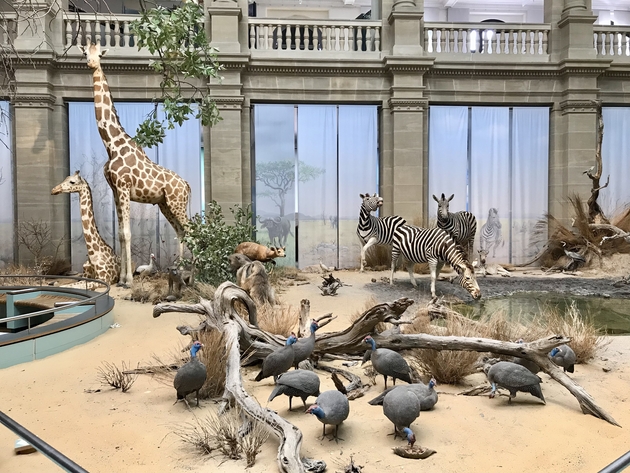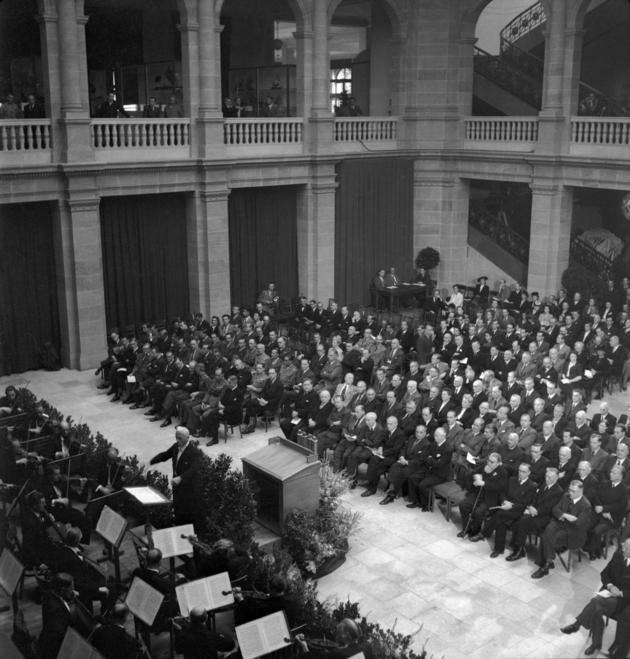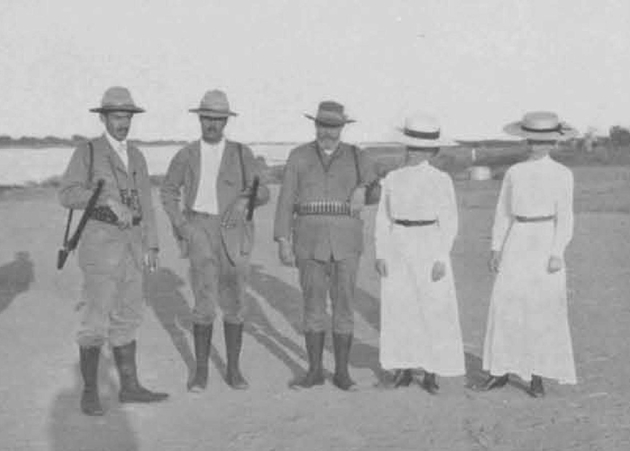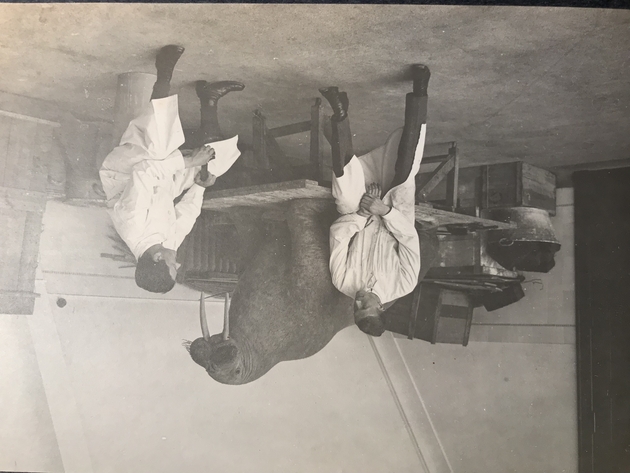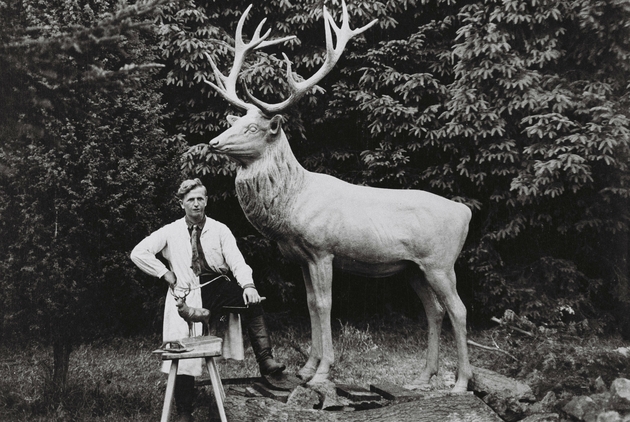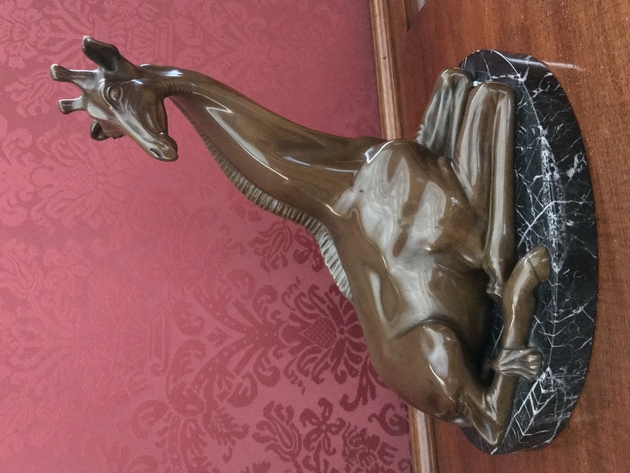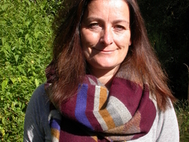
The federal giraffe on the MS Wissenschaft
A floating exhibition is touring Germany: we, the Museum Koenig Bonn (LIB), are on board the MS Wissenschaft this year!
The motto of the Science Year 2024 is "Freedom". Come along and find out what two giraffes have to do with our democracy. Admission is free!
Exhibition: 14. May - 3. October 2024 (from 22nd September in Austria)
Site: On Board of the "MS Wissenschaft"
Exhibition type: mobile special exhibition
The MS Wissenschaft was a guest in Hamburg in June and in August in Bonn and we welcomed several thousand visitors. The MS Wissenschaft is now on its way south.
Docking dates & locations can be found in the tour plan & guide:
Your Visit & Tourdates - All about the "MS Wissenschaft" - Flyer and exhibit texts for MS Wissenschaft 2024 (only in German)
The Museum Koenig in Bonn is no ordinary natural history museum, but also a historically significant ,site of German democracy'.
ABOUT THE HISTORY
The "Federal Giraffe(s)" at the Museum Koenig Bonn
The Giraffe: a special kind of animal
Every child loves giraffes. At the zoo, in the museum or perhaps even in nature, we stand in awe in front of this huge animal. And despite their long necks, giraffes only have six cervical vertebrae - like almost all mammals. Males can reach a height of almost six metres and weigh up to 2,000 kilograms; add to this the unusual pattern, the long legs and the particularly long neck - the giraffe is truly unique in the animal kingdom! It is understandable that Alexander Koenig (1858-1940) also wanted to own this special species for his natural history museum in Bonn to present it to visitors in the central atrium.
Since 2003, the two "federal giraffes" have been an integral part of the permanent exhibition "Savannah - a Changing Paradise" and welcome all visitors. Photo: A. Koch, Museum Koenig Bonn.
How did the two Bonn Giraffes get their strange name?
Apart from the species-specific characteristics of the giraffe that distinguish it from all other animal species, the two specimens at the Museum Koenig also have a very special history that led to their peculiar name.
When Germany was to have a new government after the end of the Nazi dictatorship, the constituent meeting of the Parliamentary Council took place in the Museum Koenig in Bonn on 1 September 1948, as no other representative building was available in town. Before this could happen, however, the large taxidermied animals that had been set up in the atrium had to be moved to the side corridors - including the two large giraffes.
The two giraffes have stood in the centre of the large atrium since the Museum Koenig opened in 1934. Photo: Hugo Schmölz, © Archive Cox, Cologne.
In an article entitled "On the start of the Parliamentary Council in Bonn", Walter Menzel (1901-1963), then Deputy Prime Minister of North Rhine-Westphalia, reported on the preparations in Bonn in the "Rheinische Zeitung" on 28 August 1948 under the heading "A giraffe in the Parliamentary Council". He wrote truthfully: “(...) the long-necked giraffe was moved aside a little," only to immediately answer the question he asked himself afterwards as to why it was only moved aside and not completely removed? "The giraffe's neck could not be bent [because it is made of plaster]. Its abdomen is now in the lower side aisle, its cheeky head remains in the plenum. A slatted frame has been erected in front of her. She will be hidden behind cloth in front of the high house."
For the opening of the Parliamentary Council, the large giraffe was hidden behind a high curtain. Photo: Erna Wagner-Hehmke, © Haus der Geschichte, Bonn.
Where do the two giraffes come from?
The two giraffes were hunted in 1913 during Alexander Koenig's sixth and last African expedition. The journey ran from Khartoum, the capital of Sudan, which was then under British-Egyptian administration, up the White Nile to its headwaters and tributaries. Koenig was accompanied by, among others, his wife Margarethe (1865-1943) and his friend Hans Freiherr Geyr von Schweppenburg (1884-1963), who was also an ornithologist and had already accompanied Alexander Koenig on two trips to the far north of Europe.
The standing male specimen was shot by Alexander Koenig on 14 March 1913 at Bahr el Zeraf (in Arabic بَـحْـر الـزّرَاف), the Giraffe River, in present-day South Sudan. The sitting animal is a female that was shot by Baron Geyr von Schweppenburg on 1 March at Bahr el Ghazal (in Arabic بحر الغزال), the Gazelle River. Margarethe Koenig described the events of that morning in her diary as follows:
"We docked at the Dabba el Gerdega timber station at 6½ o'clock. Lots of ostrich eggs were on offer here and everyone was buying them. I took 4 for Alex (1 egg 4 piastres). Collecting is strictly forbidden! The gentlemen went out directly, Alex said to me as he left, I'm not taking the rifle with me, there's certainly nothing going on here. He returned with von Geyr around 8 o'clock. From the countryside he called out to me "guess what Mr von Geyr has shot". So it had to be something very special and so I guessed "a giraffe". And so it was. The gentlemen had walked through the huts towards a small copse of bushes. Suddenly a giraffe appeared, chased by a dog. Von Geyr, who was in front, quickly run to Alex to ask what he should do and was given permission to shoot. As mentioned, Alex only had his shotgun with him, while von Geyr had his Drilling rifle with only one bullet. The giraffe came closer and closer, pursued by the dog, both gentlemen thought that this could not possibly be a wild giraffe, it must be a tame one, and then the shot cracked and the marvelous creature fell dead to the ground. That was quite an event! A giraffe so unexpectedly, straight into the shotgun, so to speak!“
The female giraffe shot by Baron Geyr von Schweppenburg later served as the model for a bronze sculpture (see below). Photo: Archive Museum Koenig Bonn, LIB.
Who made the taxidermies of the Giraffes and the bronze sculpture of the seated specimen?
During Alexander Koenig's Africa expedition, the taxidermists Robert Fendler (1881-1918) and the young Heinrich Durstewitz (killed in action in the First World War in 1914) were responsible for preserving the skins and skeletons of the animals they had shot. Due to their premature deaths and the effects of the First World War, both the completion of the new museum building and the taxidermic preparation of the hunting trophies were delayed, so that both could only be continued at the end of the 1920s.
Alexander Koenig's taxidermists Robert Fendler and the young Heinrich Durstewitz were responsible for preserving the skins and skeletons during the African expedition. Photo: Archive Museum Koenig Bonn, LIB.
Alexander Koenig's new and talented chief taxidermist Berthold Korf (1893-1981) continued the taxidermic preparation of the two giraffes in the early 1930s. He was highly praised by Koenig during the opening ceremony of the museum on 13 May 1934. However, as Korf was a National Socialist and harassed other museum employees, he was later dismissed without notice. Under the Nazis, he then made a career with the city of Bonn; Lord Mayor Rickert even put him in charge of the police department.
The taxidermist and animal sculptor Berthold Korf was responsible, among other things, for the installation of the two giraffes in the Museum Koenig. He also created the bronze sculpture of the seated specimen. Photo: Archive Museum Koenig Bonn, LIB.
Modeled on the giraffe specimens, Korf also created the bronze sculpture of a seated specimen, which has since stood on a windowsill in Alexander Koenig's former study. It will be on public display for the first time on board the MS Wissenschaft from 14 May to 15 September 2024. The BMBF's Science Year 2024 is being organized under the motto "Democracy and Freedom".
The bronze sculpture of the seated "Federal Giraffe" from Alexander Koenig's former study room, from which Konrad Adenauer (1876-1967) ruled Germany for some time in 1949. The sculpture is part of the exhibition at MS Wissenschaft 2024. Photo: K. Meusemann, LIB.
How many species of giraffe are there actually?
After all giraffes had long been considered as a single species (Giraffa camelopardalis) with several subspecies, three different giraffe species are currently recognised: The northern giraffe (Giraffa camelopardalis) from northern Africa, the southern giraffe (G. giraffa) from the southern part of the continent and the Masai giraffe (G. tippelskirchi) from East Africa. According to their origin, the two Bonn "federal giraffes" belong to the Nubian subspecies (G. camelopardalis camelopardalis) of the northern giraffe. The okapi (Okapia johnstoni) also belongs to the giraffe family; it is also known as the forest giraffe, even if the morphological similarities are not immediately obvious. They live in the shady rainforest in the Democratic Republic of the Congo.
Past Events related to the MS Wissenschaft took place in the museum in May and August in Bonn.



